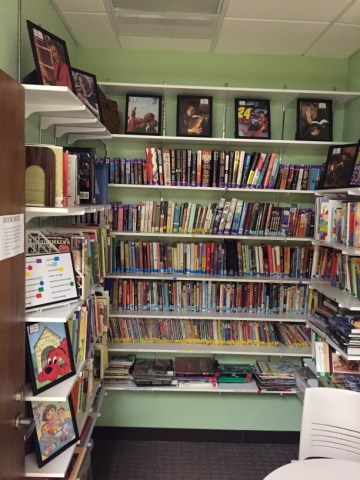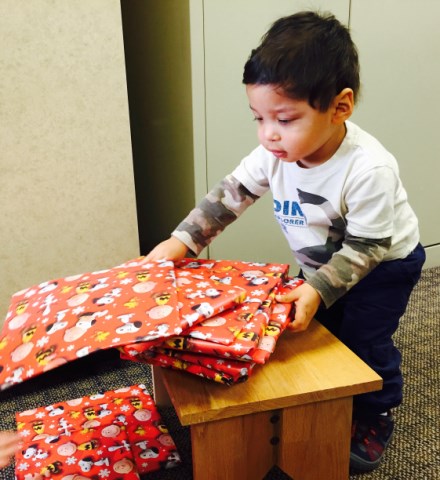“Mommy, since you’re going to your class today I want you to remember to bring a book home so we can have our special time together,” said the six-year-old boy to a student in my Adult Education GED/Reading class.
 Most of the students in my class want to earn their high school equivalency diploma. They read at a 4.0-8.9 grade level so they have to improve their reading skills. Their ages range from 18-62 years old. Half of them grew up in the U. S. while the others were raised in various foreign countries. The reasons why they did not earn their diploma are varied.
Most of the students in my class want to earn their high school equivalency diploma. They read at a 4.0-8.9 grade level so they have to improve their reading skills. Their ages range from 18-62 years old. Half of them grew up in the U. S. while the others were raised in various foreign countries. The reasons why they did not earn their diploma are varied.
One common thing I learned is that very few of them have any books in their homes. Most of them do not have library cards and they don’t have money to buy new books. Many of them are parents but they are not reading to their children. Therefore, I decided that my students should have access to books so they could practice reading at home. They also needed books to read to their children so I created a free lending library next to the Adult Education classrooms.
First, I met with the Director of the Adult Education program and he agreed to let me use a small closet. He also said that he would pay for the shelving. In order to stock this library I went to used book sales at eight local libraries and also shopped at thrift stores. My friends and family members donated their own books. Eventually, I had accumulated a large collection of fiction and nonfiction books for children and adults. I created categories for the books and added colored labels to the spines so they could easily be returned to the appropriate section. We decided to name it the Book Nook.
Information about how the Book Nook was organized and the “no fee” return policy was shared with all the instructors. Sheets that explained the importance of reading to children were put on display. It worked best when we personally took the students to the Book Nook to help them find books or when we gave assignments that required them to choose a book.
Here are a few of our success stories:
- In my class students had to read at home and keep a log of the number of minutes spent reading each night. Mario had two toddlers at home but no books. We made a deal that he could count the time spent reading to his kids in the reading log so he began borrowing books from the Book Nook regularly. By the end of the semester Mario had earned the most reading minutes of anyone in my class.
- “My day is very hectic since I have two kids. After I started bringing books home I figured out that reading helps me relax. Reading actually calms me down,” said Tracy.
- “My two middle school boys and I now read books at home. We get together at the dining room table and read each night, “ said Susanna.
- One student named Maria had a neighbor with a seven-year-old boy who never read at home. During the summer she brought this boy to the Book Nook each week so he could choose a books to read at home. She also borrowed books for another neighbor.
 Getting books into the hands of young children became my focus so I organized the “Christmas Book-a-Day” project. It is similar to how an Advent Calendar works. First, I had to collect a huge supply of “almost new” books for toddlers and elementary age children. Adult Education students who were the parents of young children were invited to come and look through this large assortment of picture books and easy chapter books. Each student could choose 15-20 books for her child. There was Christmas paper available so she could wrap the books before leaving. These wrapped books were placed in a special spot at home and the child was allowed to open one gift each night before bed. The mother and child then read the book together. It was a great way to get the family into the habit of reading.
Getting books into the hands of young children became my focus so I organized the “Christmas Book-a-Day” project. It is similar to how an Advent Calendar works. First, I had to collect a huge supply of “almost new” books for toddlers and elementary age children. Adult Education students who were the parents of young children were invited to come and look through this large assortment of picture books and easy chapter books. Each student could choose 15-20 books for her child. There was Christmas paper available so she could wrap the books before leaving. These wrapped books were placed in a special spot at home and the child was allowed to open one gift each night before bed. The mother and child then read the book together. It was a great way to get the family into the habit of reading.
In closing, I would like to share one of my favorite quotes.
“Children are made readers on the laps of their parents.”
Kathy